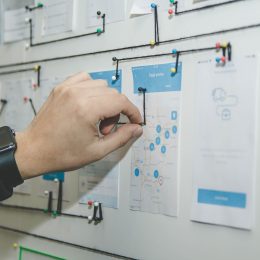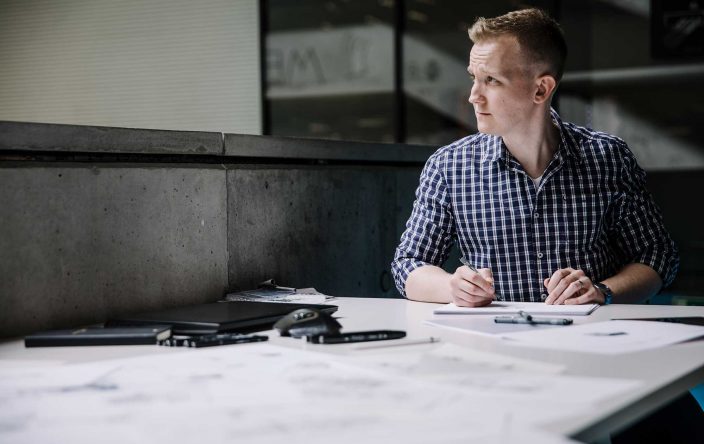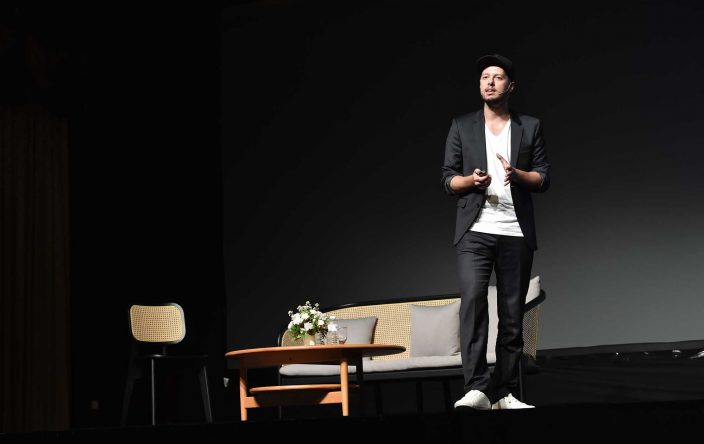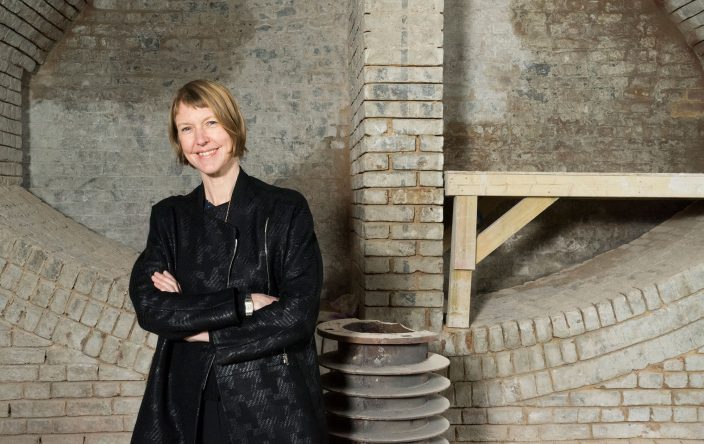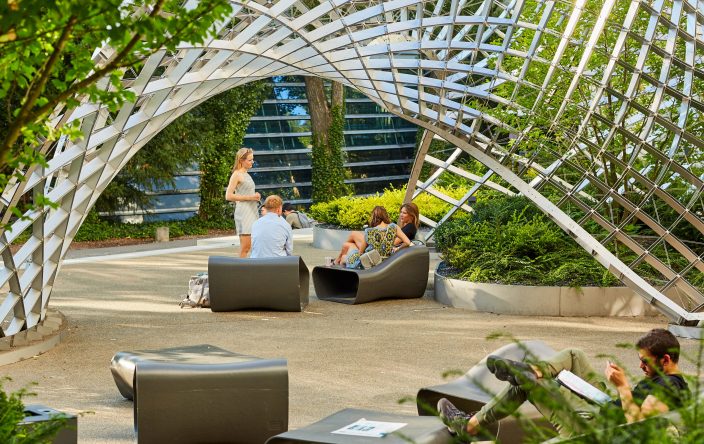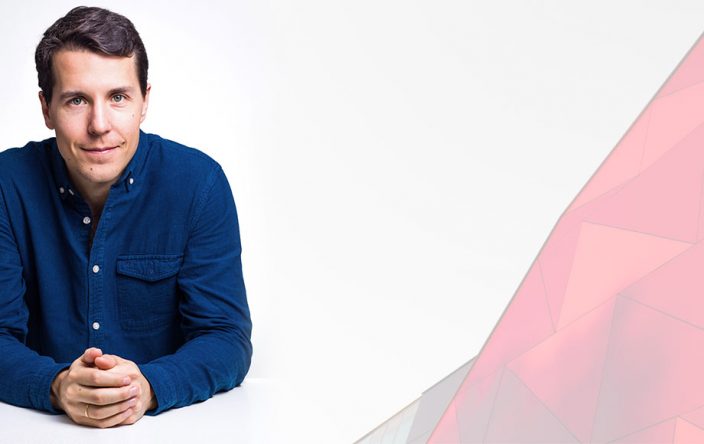
How the Internet of Things (IoT) is Changing Modern Office Design
The Internet of Things (IoT) is all around us. It is embedded in everyday objects we use and allows them to communicate autonomously with each other. Modern office design is evolving alongside technological advancements, with many design firms utilizing new tech in order to optimize all aspects of how people work and collaborate.
One of these aspects relates to the an ever-shifting flow of different occupants in office spaces: employees, temporary occupants, partners, customers, suppliers, clients, etc. Over the last few decades, it has become obvious that, in order to stay competitive and increase productivity, companies need to embrace the idea that physical spaces have to adapt to the concept of fluidity. This flexibility has already become a staple in the organization of many forward-thinking enterprises which created workplaces that facilitate a way of operating in which team sizes and way of collaborating vary from project to project, and depend on specific tasks and project stage.
Data collection to analyze the use of office spaces
Deloitte’s new HQ in Amsterdam, named The Edge, epitomizes this smart utilization of new tech which affects office design in terms of organization and energy efficiency. Designed by PLP Architecture, the building is described as the world’s greenest, most intelligent building. The project, which promotes a new way of smart-enabled agile working, has also received the highest sustainability score ever awarded by the British rating agency BREEAM. It provides 1,000 desks for 2,500 Deloitte workers who interact with it – for anything from parking to desk allocation, instant locker access and food ordering – through a dedicated app which connects with 30,000 sensors embedded in the building’s LED lighting system.
As a result, Deloitte’s talent attraction and retention has rocketed, with a four-fold increase in job applications and 60% fewer absentees. Data collection allowed company to analyze the use of their office spaces and helped push forward the concept of hot desking–using desks only when they’re needed. This greatly increases occupancy efficiency and boosts productivity. Meeting rooms may be moved, merged, or eliminated entirely, providing a more efficient use of any available office space.
It is only a matter of time before the new standard for meeting and presentations is immediate interaction. Presenters will be able to send information directly to participants’ personal devices or collaborative interactive displays such as smart whiteboards. Telepresence is already here and will be further advanced through the proliferation of virtual reality. VR allows companies to hold interactive presentations and get fast and accurate feedback on their products and concepts. Attendees can “travel” to remote locations with their colleagues or customers, with motion controllers and positional tracking of the headsets bringing hands and body movement into long-distance meetings, making communication more natural and effective. The increasing use of VR in meetings reduces the need for physical meeting and conference rooms.
It is only a matter of time before the new standard for meeting and presentations is immediate interaction. Presenters will be able to send information directly to participants’ personal devices or collaborative interactive displays such as smart whiteboards. Telepresence is already here and will be further advanced through the proliferation of virtual reality. VR allows companies to hold interactive presentations and get fast and accurate feedback on their products and concepts. Attendees can “travel” to remote locations with their colleagues or customers, with motion controllers and positional tracking of the headsets bringing hands and body movement into long-distance meetings, making communication more natural and effective. The increasing use of VR in meetings reduces the need for physical meeting and conference rooms.
Sharing information and knowledge
Another important aspect of the use of IoT in office design is its contribution to sharing information and knowledge. The future of modern workplaces lies in seamless collaboration across departments and continents. Studios, incubators, pop-ups are just a few new workplace types that evolved with the emergence of digital technology. These new spaces reflect the fast-paced economy that is pushing out the old concept of hierarchical structure manifested through space. The anachronistic model of centralized decision-making is being replaced with a more transparent setup that reinforces different cultural values and caters to a whole new generation of young professionals that put great value on well-being and at-work comfort.
Large companies build their office buildings equipped with smart sensors and heating systems that can regulate micro-environments to suit individual employees makes the occupants of the building more comfortable, and they can do their work more productively. This ability of the workplace to boost user satisfaction is particularly important with millennials. Tech giants like Facebook and Google are leading examples of companies that embraced campus-style workspace aimed for young talents.
In designing Apple’s new spaceship-shaped campus in Cupertino, California, Foster+Partners included a 100,000-square-foot fitness center, 300,000 square feet of research and development facilities, and two miles of walkways and running paths for employees at Apple’s new spaceship-shaped campus in Cupertino, California. They also included an underground parking, as well as an orchard, meadow and pond. The staff can also navigate the campus on bikes, electric golf carts and commuter shuttles. The use of environmental sensors tracking the interior temperature, humidity, air quality, barometric pressure, ambient light levels and occupancy turns a building into an intelligent ecosystem that is both cost-efficient and increases productivity.
***
Intelligent office design is already embraced as cutting-edge innovation and a smart business investment that improves workplace dynamics. How do you see your workplace evolving in the future?
Join our Newsletter
Get our best content on Architecture, Creative Strategies and Business. Delivered each week for free.

JOIN THE
ARCHIPRENEUR ACADEMY
- 9 Stage Studio Growth Roadmap
- Library of In-Depth Courses
- Checklists and Workbooks
- Quick Tips and Tutorials
- A Supportive Online Community





